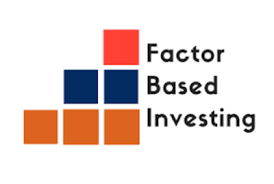Factor-based investing spreads from stocks to bonds

COMPARED with equity investing, bond investing can seem stuck in the dark ages. As hedge funds and asset managers use whizzy algorithms to trade shares automatically, bond-fund managers still often call traders by phone. So when new investing strategies do arise, they make an even bigger splash. “Factor” investing is the latest example.
This is the idea, credited to economists Eugene Fama and Kenneth French, that predictable, persistent factors explain long-term asset returns. Their 1992 model for equities used the size of firms and what became known as “value” (the tendency for cheap assets to outperform pricey ones). Later models added factors such as “momentum” (the tendency of prices to keep moving in the same direction). Factor-based analysis has squeezed active managers (since it explains much of their returns) and helped drive the rise of passive investing. Investors can access factors in equities, often called “smart beta”, through cheap index-tracking funds or exchange-traded funds (ETFs) from the likes of BlackRock and State Street Global Advisors.
Messrs Fama and French considered factors in bond returns as early as 1993, though not the same ones as for equities (they reckoned, for instance, that for bonds value had “no obvious meaning”). Federal requirements since 2002 to disclose transaction prices and volumes have enabled closer analyses. A recent paper by researchers at AQR Capital Management, a $ 226bn hedge fund founded by a student of Mr Fama that specialises in factor investing for equities, looks at four factors for global sovereign bonds and American corporate ones: carry (high-yielding bonds beat low-yielding ones), quality (safer assets have better risk-adjusted returns), value and momentum.
These not only would have provided consistently good returns over the past two decades, but were also largely uncorrelated with factors in equity markets, credit risk for bonds and macroeconomic variables such as inflation. Since active bond-fund managers tend to make excess returns mainly by buying riskier bonds, and a traditional bond index-tracking fund means exposure to the firms and countries that issue the most debt, factors provide a third, distinctive investment option.
AQR’s first dedicated fixed-income offering, a fund of American high-yield (that is, junk-rated) bonds, was launched in mid-2016. It outperformed the benchmark index by 2.1 percentage points in its first year, and 2.6 points in its second. Tony Gould of AQR credits not only the factor modelling for its success. He says that the higher cost of trading bonds compared with equities needs to be built into the bond-picking process. The firm has since started two more bond funds. Other such firms that used to focus on equities are looking into bonds, too. Man Numeric, for instance, a quant fund in Boston, wants to apply its expertise in company-level analysis to high-yield bonds.
Among the mass-market offerings are BlackRock’s first smart-beta bond fund, launched in 2015. It switched from active management to index-tracking in 2018, and the firm now has several index-tracking bond ETFs that use factors (mostly quality and value). Fidelity Investments launched two bond factor ETFs in March, and Invesco launched eight on July 25th.
Factor investing for bonds is still so new that many investors have not even heard of it. But opportunities to use it are growing because of recent European regulations mandating price and volume disclosure for bonds. Just five years ago a fund manager would have struggled to find enough data for non-American bonds, says Collin Crownover of State Street Global Advisors. Now the firm is applying quality- and value-factor analysis to corporate bonds in euros and sterling. The way index-trackers and smart-beta approaches laid waste to stock-pickers suggests that managers of active bond funds should be quaking.
Clarification (August 10th 2018): This article was amended to reflect the fact that factors in bonds provide consistent returns, but not necessarily ones correlated with overall bond-market returns.
This article appeared in the Finance and economics section of the print edition under the headline “Fama and fortune”

